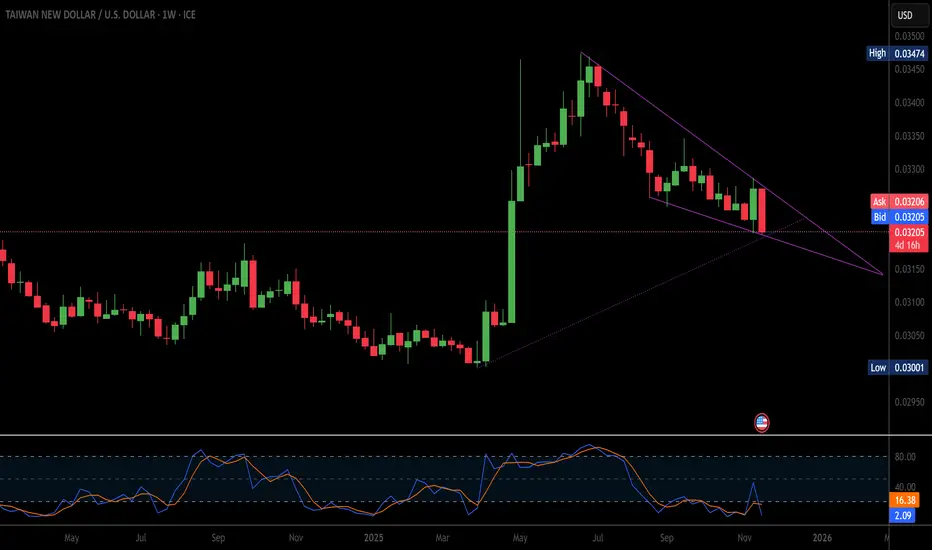The Taiwan Dollar (TWD) recently erased its sharpest advance in weeks against the U.S. Dollar (USD). This shift occurred despite the central bank's commitment against currency manipulation. A critical analysis reveals that equity outflows are outweighing exchange rate pledges. This TWD/USD decrease results from multi-domain forces, encompassing geopolitics, macroeconomics, and technological shifts. We must examine these intertwined factors to understand the currency's directional momentum.
Geopolitical and Geostrategic Pressures
Geopolitical tensions between mainland China and Taiwan generate significant investment uncertainty. Heightened cross-strait risk directly impacts investor confidence in Taiwanese assets. Foreign investors frequently exhibit risk-off behavior, prompting capital repatriation and increasing USD demand. This continuous, underlying geostrategic friction acts as a structural headwind for the TWD. Moreover, global economic fragmentation encourages supply chain "near-shoring" away from Asia. This shift potentially reduces Taiwan's export-driven trade surpluses over the long term.
Macroeconomics and Capital Flight
The core cause of TWD depreciation remains foreign capital outflows from the equity market. Foreign institutional investors hold a substantial share of the Taiwan stock market (TAIEX). Their net selling of Taiwanese stocks creates a massive demand for the USD to repatriate capital. This overpowers the TWD-supportive effects of the central bank's non-manipulation commitment. Furthermore, U.S. Federal Reserve policy drives the USD strength. Higher U.S. interest rates increase the yield spread against Taiwan, attracting capital to U.S. dollar-denominated assets.
Technology, Cyber, and High-Tech Dynamics
Taiwan's economy depends heavily on the high-tech and semiconductor industries. Slowing global demand for electronics has recently impacted Taiwan's export performance. Although the long-term trend remains strong, cyclical downturns in the Information and Communications Technology (ICT) sector directly weaken the TWD. Cyber-related risks also contribute to corporate concerns. Supply chain vulnerabilities and intellectual property threats necessitate expensive global diversification. This increased cost structure affects corporate profitability and, indirectly, investor appetite for local equities.
Science and Patent Analysis Trends
Taiwan maintains a strong position in high-tech innovation, evidenced by patent filings from giants like TSMC. However, the economic benefits of this technological edge are changing. Increased foreign investment by Taiwanese high-tech companies in the U.S. and Japan diverts capital. This outward Foreign Direct Investment (FDI), intended for supply chain resilience, reduces domestic TWD demand. While the science sector remains robust, its financial flows are now shifting toward a more global footprint. This global realignment acts as a brake on local currency strength.
Conclusion: Managing Structural Weakness
The TWD/USD decrease reflects structural pressures transcending temporary market noise. Geopolitics drives capital repatriation, while U.S. monetary policy strengthens the rival currency. Technology's global expansion now distributes Taiwan's capital abroad, reducing domestic TWD demand. Authorities must manage these intertwined forces to stabilize the currency. The immediate market focus remains on foreign equity flows as the primary determinant of TWD direction.
Geopolitical and Geostrategic Pressures
Geopolitical tensions between mainland China and Taiwan generate significant investment uncertainty. Heightened cross-strait risk directly impacts investor confidence in Taiwanese assets. Foreign investors frequently exhibit risk-off behavior, prompting capital repatriation and increasing USD demand. This continuous, underlying geostrategic friction acts as a structural headwind for the TWD. Moreover, global economic fragmentation encourages supply chain "near-shoring" away from Asia. This shift potentially reduces Taiwan's export-driven trade surpluses over the long term.
Macroeconomics and Capital Flight
The core cause of TWD depreciation remains foreign capital outflows from the equity market. Foreign institutional investors hold a substantial share of the Taiwan stock market (TAIEX). Their net selling of Taiwanese stocks creates a massive demand for the USD to repatriate capital. This overpowers the TWD-supportive effects of the central bank's non-manipulation commitment. Furthermore, U.S. Federal Reserve policy drives the USD strength. Higher U.S. interest rates increase the yield spread against Taiwan, attracting capital to U.S. dollar-denominated assets.
Technology, Cyber, and High-Tech Dynamics
Taiwan's economy depends heavily on the high-tech and semiconductor industries. Slowing global demand for electronics has recently impacted Taiwan's export performance. Although the long-term trend remains strong, cyclical downturns in the Information and Communications Technology (ICT) sector directly weaken the TWD. Cyber-related risks also contribute to corporate concerns. Supply chain vulnerabilities and intellectual property threats necessitate expensive global diversification. This increased cost structure affects corporate profitability and, indirectly, investor appetite for local equities.
Science and Patent Analysis Trends
Taiwan maintains a strong position in high-tech innovation, evidenced by patent filings from giants like TSMC. However, the economic benefits of this technological edge are changing. Increased foreign investment by Taiwanese high-tech companies in the U.S. and Japan diverts capital. This outward Foreign Direct Investment (FDI), intended for supply chain resilience, reduces domestic TWD demand. While the science sector remains robust, its financial flows are now shifting toward a more global footprint. This global realignment acts as a brake on local currency strength.
Conclusion: Managing Structural Weakness
The TWD/USD decrease reflects structural pressures transcending temporary market noise. Geopolitics drives capital repatriation, while U.S. monetary policy strengthens the rival currency. Technology's global expansion now distributes Taiwan's capital abroad, reducing domestic TWD demand. Authorities must manage these intertwined forces to stabilize the currency. The immediate market focus remains on foreign equity flows as the primary determinant of TWD direction.
The5ers Funding Forex Traders & Growth Program. Get Funded with up to $2.56M
We Trade Forex - Come Join Us!
the5ers.com
We Trade Forex - Come Join Us!
the5ers.com
免责声明
这些信息和出版物并非旨在提供,也不构成TradingView提供或认可的任何形式的财务、投资、交易或其他类型的建议或推荐。请阅读使用条款了解更多信息。
The5ers Funding Forex Traders & Growth Program. Get Funded with up to $2.56M
We Trade Forex - Come Join Us!
the5ers.com
We Trade Forex - Come Join Us!
the5ers.com
免责声明
这些信息和出版物并非旨在提供,也不构成TradingView提供或认可的任何形式的财务、投资、交易或其他类型的建议或推荐。请阅读使用条款了解更多信息。
